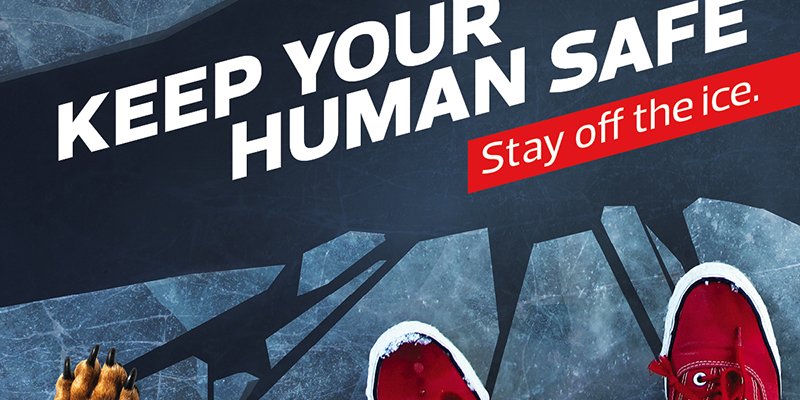Ice safety tips and information, including, what to do if a person or pet falls through the ice.
Please do your part to keep you and your pets safe in areas with water features. The thickness of the ice can be deceiving and weak areas can give way at any moment. Obey the posted signs to reduce the risk of injury.
If a person or pet falls into the water call 911 immediately. This includes the river, a stormwater pond, drainage outfall or other water body. Keep an eye on the individual or pet but do not attempt to rescue them yourself.
North Saskatchewan River
It is never safe to walk on the ice of the North Saskatchewan River, no matter the season. The water flows beneath the surface, which impacts ice thickness and can be deceiving.
Stormwater Lakes and Ponds
Stormwater facilities aren't safe for recreation because the inlet and outlet pipes keep water flowing beneath the frozen top layer.
If You Fall Through Ice
- Yell to get the attention of others
- Reach and grab onto the ice
- Kick hard, and push your stomach onto the ice
- Roll like a log once on the ice; don't get up to walk to the shore
- Hang onto the ice and keep yelling if you can't get out yourself
If Another Person Falls Through Ice
- Call 911
- Yell out to the person to exit the ice from the same path they went in (if they walked on that ice, you know it can hold them)
- Have them place their arms on the ice shelf and kick their feet to thrust their chest onto the ice
- Instruct the person to roll onto the ice shelf away from the hole they created
- Continue watching and talking to the person until help arrives
Tips To Keep Pets Safe
- Ensure your dog or pet obeys your voice commands before going near a body of water
- Be aware of your surroundings and keep your pet in sight at all times
- It's best to keep your pet on a leash around water during fall and spring freeze-thaw cycles (typically between November to December and March to April)
Ice Thickness
Many factors can affect ice thickness including location, the time of year and environmental factors such as:
- Water depth and size of the body of water
- Currents, tides and other moving water
- Chemicals including salt
- Fluctuations in water levels
- Logs, rocks and docks absorbing heat from the sun
- Changing air temperature
- Shock waves from vehicles travelling on the ice



